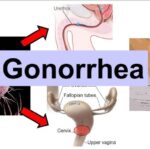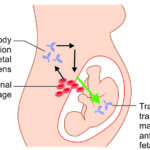Neonatal abstinence syndrome (NAS) is a withdrawal condition in newborns caused by maternal use of opioids or other addictive substances during pregnancy. The condition affects the central nervous system (CNS), gastrointestinal tract, and autonomic nervous system, leading to symptoms such as tremors, irritability, poor feeding, and respiratory distress. With the rise in opioid use, NAS has become a significant public health concern, requiring early detection, appropriate management, and preventive strategies.

Causes and Risk Factors
1. Drug Exposure During Pregnancy
NAS occurs when a fetus is exposed to substances that cause physical dependence in utero. At birth, the sudden cessation of the drug leads to withdrawal symptoms.
- Opioids: Morphine, heroin, methadone, buprenorphine, oxycodone, fentanyl
- Benzodiazepines: Diazepam, lorazepam, alprazolam
- Antidepressants: Selective serotonin reuptake inhibitors (SSRIs)
- Stimulants: Cocaine, amphetamines
2. Risk Factors for Severe NAS
- Higher maternal opioid dosage
- Polysubstance abuse (multiple drugs used during pregnancy)
- Premature birth (preterm infants may experience milder symptoms due to immature liver metabolism)
- Poor prenatal care and maternal malnutrition
- Maternal history of drug dependency
Pathophysiology of Neonatal Abstinence Syndrome
During pregnancy, opioids cross the placenta, binding to fetal opioid receptors in the brain and gastrointestinal tract. The baby develops physical dependence, and at birth, the sudden removal of the drug leads to hyperactive nervous system responses and withdrawal symptoms.
Symptoms of Neonatal Abstinence Syndrome
Symptoms of NAS typically appear within 24 to 72 hours after birth, but in some cases, withdrawal can be delayed up to five to seven days, depending on the drug type.
1. Central Nervous System Symptoms
- High-pitched crying and excessive irritability
- Tremors and jitteriness
- Hypertonia (stiffened muscles)
- Seizures (in severe cases)
- Sleep disturbances
2. Gastrointestinal Symptoms
- Poor feeding and weak suck reflex
- Vomiting and diarrhea
- Weight loss or failure to gain weight
3. Autonomic and Respiratory Symptoms
- Rapid breathing (tachypnea)
- Sweating and fever
- Nasal congestion and sneezing
- Increased yawning
Severity Assessment: Finnegan NAS Scoring System
The Finnegan Neonatal Abstinence Scoring System (FNASS) is commonly used to assess the severity of NAS symptoms. Higher scores indicate severe withdrawal requiring medical intervention.
| Symptom | Score |
|---|---|
| High-pitched crying | 2–3 |
| Tremors | 1–4 |
| Poor feeding | 2 |
| Vomiting | 2 |
| Seizures | 5 |
Diagnosis of Neonatal Abstinence Syndrome
Diagnosis is based on clinical symptoms, maternal history, and laboratory testing.
1. Maternal History and Risk Assessment
- Detailed drug use history during pregnancy
- Urine toxicology screening (maternal and neonatal)
2. Neonatal Testing
- Meconium or umbilical cord tissue analysis – Detects drugs used in late pregnancy
- Neonatal urine toxicology – Confirms recent exposure
Treatment of Neonatal Abstinence Syndrome
Management depends on symptom severity, supportive care, and pharmacological intervention when necessary.
1. Non-Pharmacological Treatment (First-Line Management)
- Rooming-in with the mother to promote bonding and reduce stress
- Skin-to-skin contact and swaddling for comfort
- Frequent, small feedings to address feeding difficulties
- Low-stimulation environment (dim lighting, reduced noise)
2. Pharmacological Treatment
For severe withdrawal symptoms, opioid replacement therapy is used to gradually wean the baby off dependence.
- Morphine (oral) – First-line medication to control withdrawal
- Buprenorphine or Methadone – Used in some cases for opioid withdrawal
- Phenobarbital – Used for seizures or polysubstance withdrawal
3. Duration of Treatment
- Mild cases: Supportive care only, lasting a few days
- Moderate cases: 5–10 days of opioid therapy
- Severe cases: Up to 4 weeks of NICU care
Complications of Neonatal Abstinence Syndrome
- Growth retardation and poor weight gain
- Increased risk of sudden infant death syndrome (SIDS)
- Neurodevelopmental delays and behavioral problems
- Longer hospital stays and NICU admission
Prevention of Neonatal Abstinence Syndrome
1. Maternal Education and Early Intervention
- Prenatal counseling on substance use risks
- Medication-assisted treatment (MAT) for opioid-dependent pregnant women
- Routine drug screening during prenatal visits
2. Access to Treatment Programs
- Methadone or Buprenorphine therapy for opioid dependence
- Support groups and mental health counseling
3. Breastfeeding and Neonatal Care
- Breastfeeding may reduce NAS severity in opioid-treated mothers
- Postnatal follow-up for developmental monitoring
Neonatal abstinence syndrome is a serious but treatable condition that results from prenatal drug exposure. Early diagnosis, comprehensive medical management, and maternal substance use intervention can improve outcomes. Preventative strategies, including education, access to addiction treatment, and supportive neonatal care, remain critical in addressing the growing impact of NAS.

